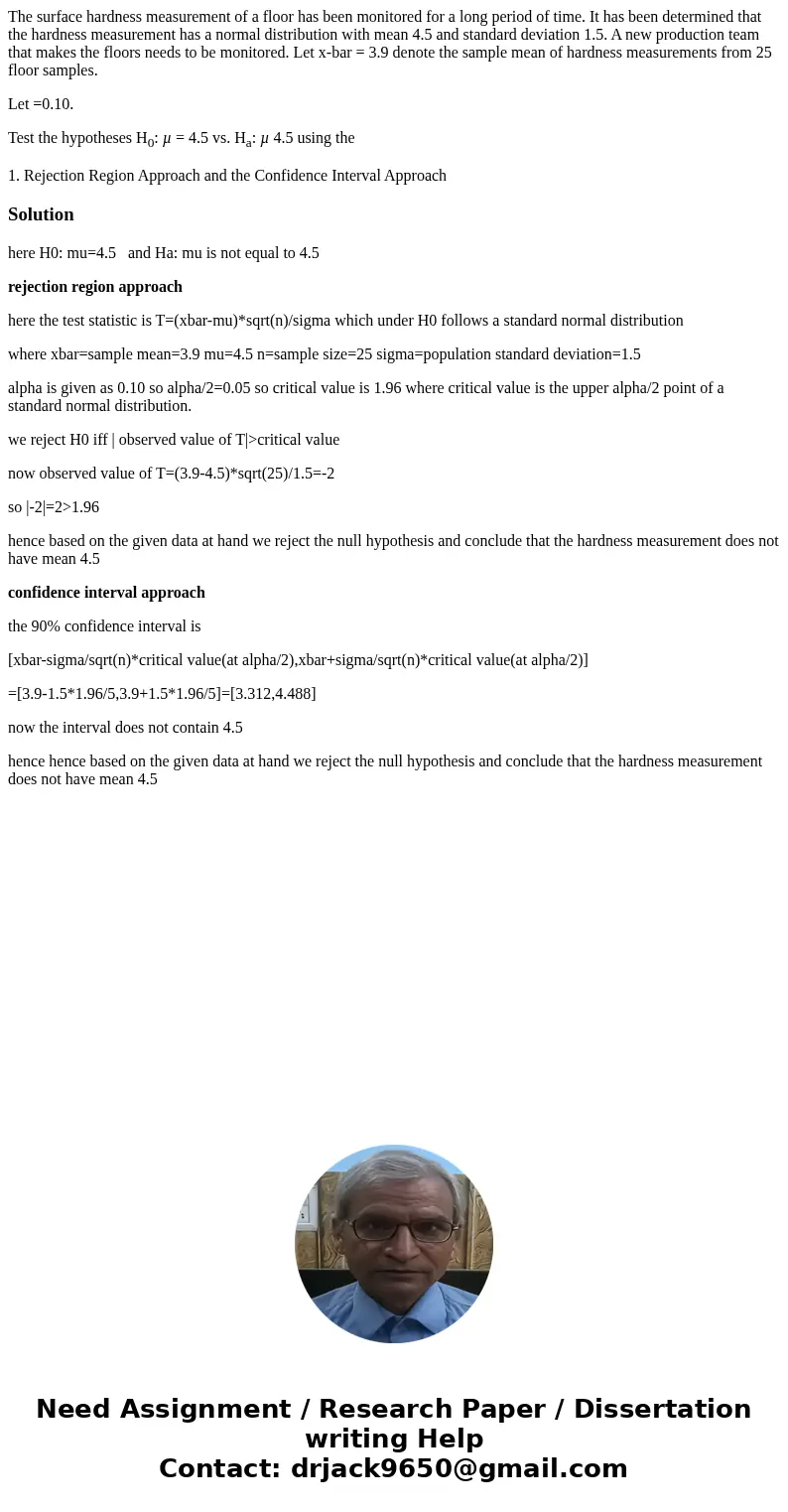The surface hardness measurement of a floor has been monitor
The surface hardness measurement of a floor has been monitored for a long period of time. It has been determined that the hardness measurement has a normal distribution with mean 4.5 and standard deviation 1.5. A new production team that makes the floors needs to be monitored. Let x-bar = 3.9 denote the sample mean of hardness measurements from 25 floor samples.
Let =0.10.
Test the hypotheses H0: µ = 4.5 vs. Ha: µ 4.5 using the
1. Rejection Region Approach and the Confidence Interval Approach
Solution
here H0: mu=4.5 and Ha: mu is not equal to 4.5
rejection region approach
here the test statistic is T=(xbar-mu)*sqrt(n)/sigma which under H0 follows a standard normal distribution
where xbar=sample mean=3.9 mu=4.5 n=sample size=25 sigma=population standard deviation=1.5
alpha is given as 0.10 so alpha/2=0.05 so critical value is 1.96 where critical value is the upper alpha/2 point of a standard normal distribution.
we reject H0 iff | observed value of T|>critical value
now observed value of T=(3.9-4.5)*sqrt(25)/1.5=-2
so |-2|=2>1.96
hence based on the given data at hand we reject the null hypothesis and conclude that the hardness measurement does not have mean 4.5
confidence interval approach
the 90% confidence interval is
[xbar-sigma/sqrt(n)*critical value(at alpha/2),xbar+sigma/sqrt(n)*critical value(at alpha/2)]
=[3.9-1.5*1.96/5,3.9+1.5*1.96/5]=[3.312,4.488]
now the interval does not contain 4.5
hence hence based on the given data at hand we reject the null hypothesis and conclude that the hardness measurement does not have mean 4.5

 Homework Sourse
Homework Sourse